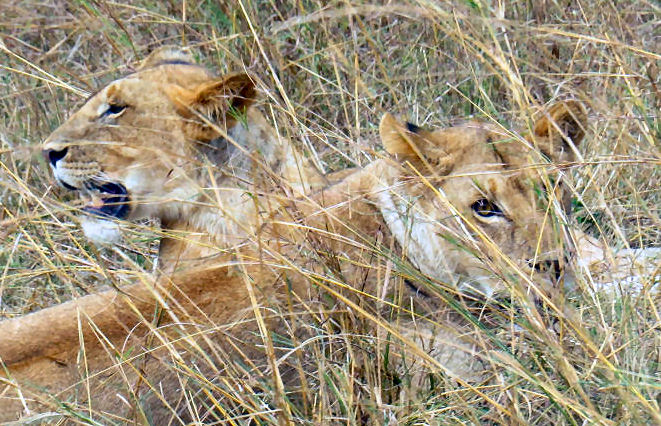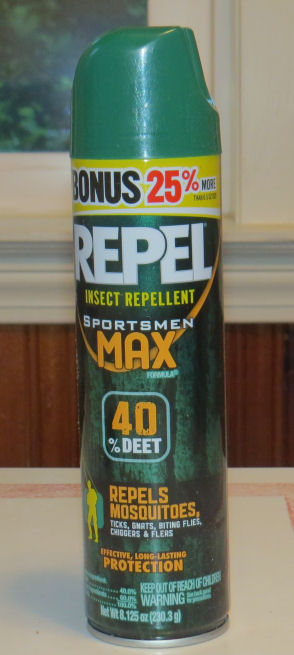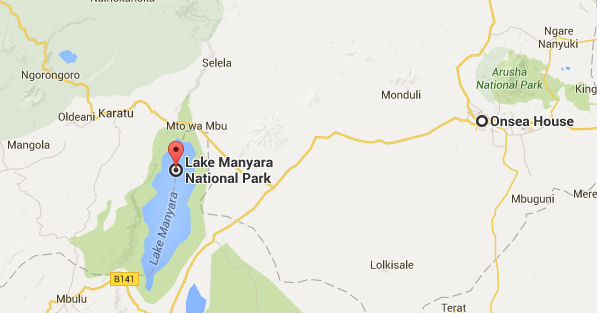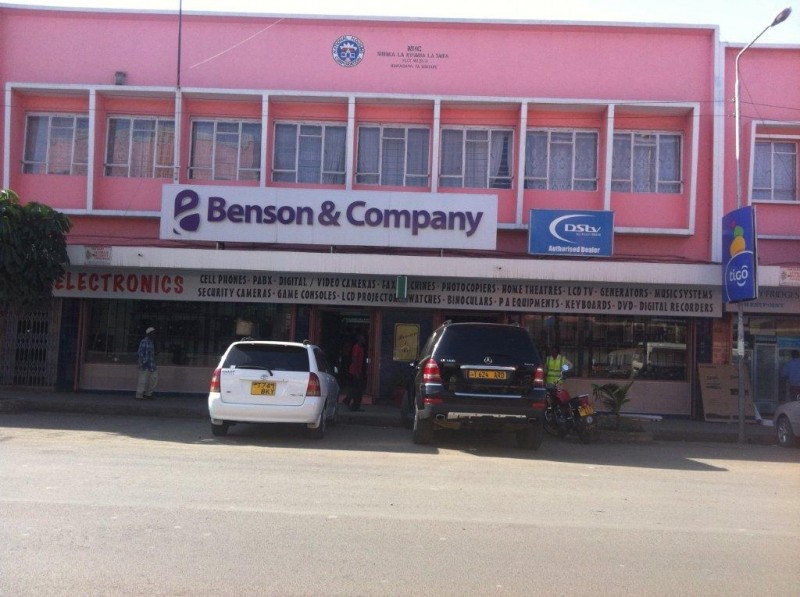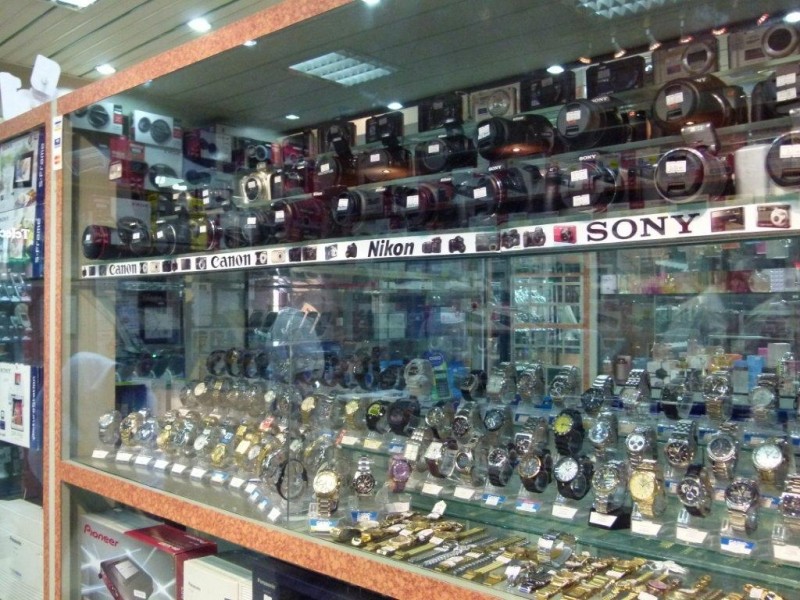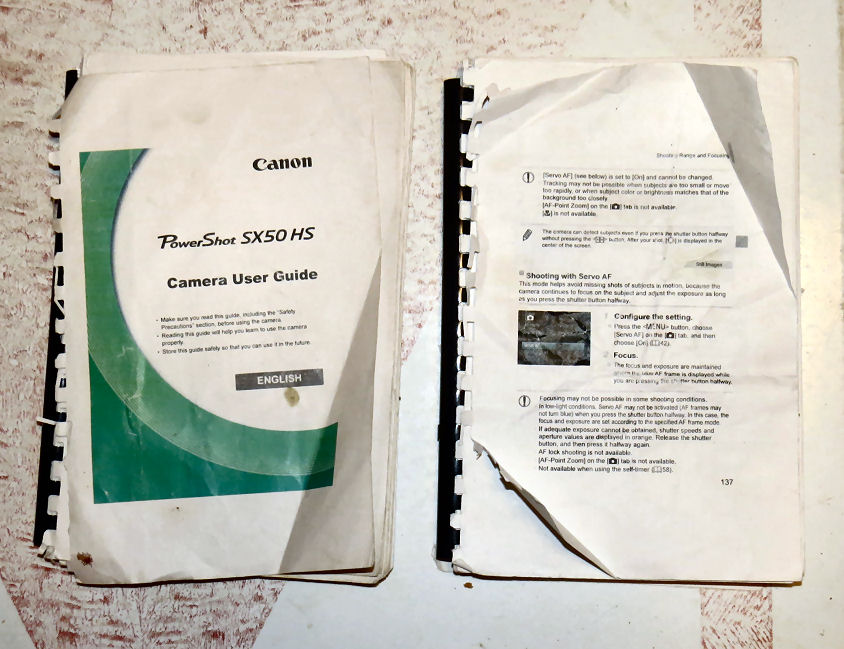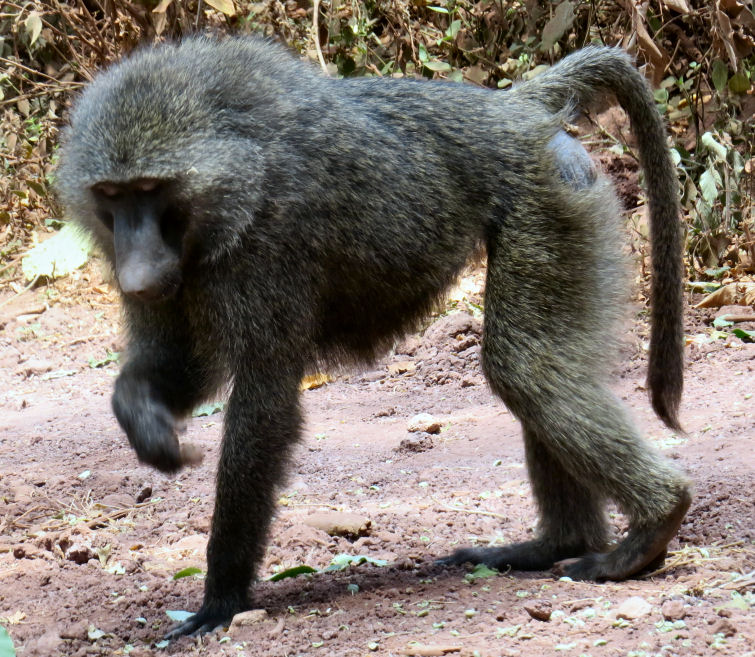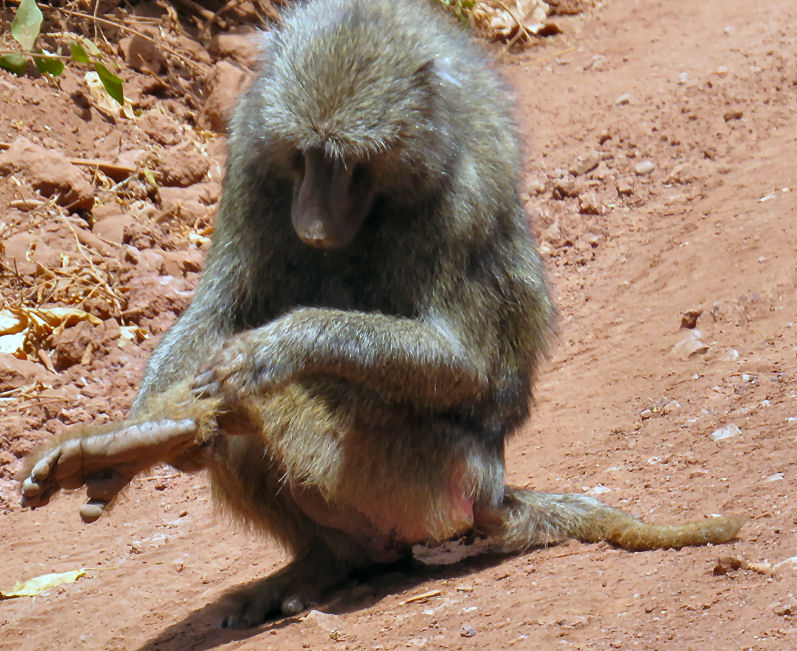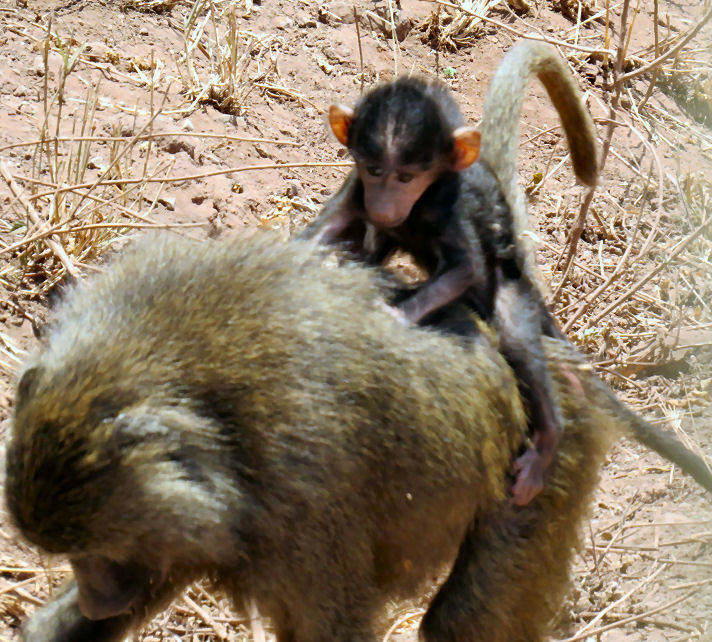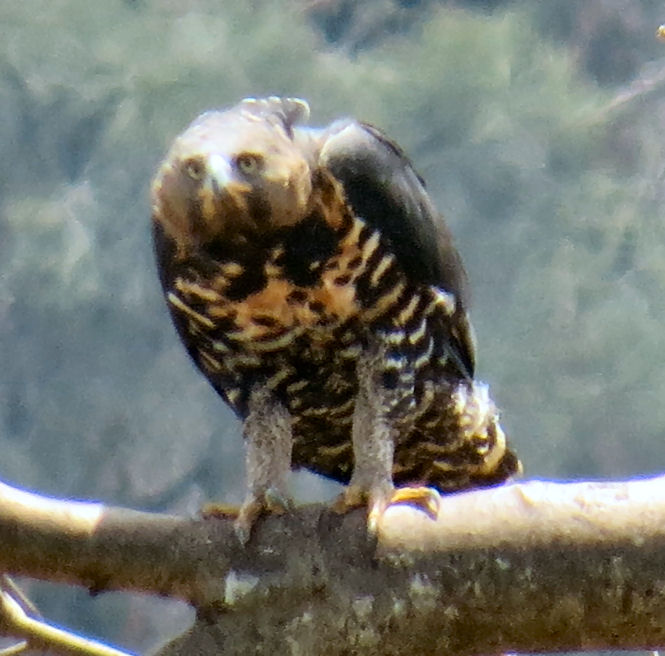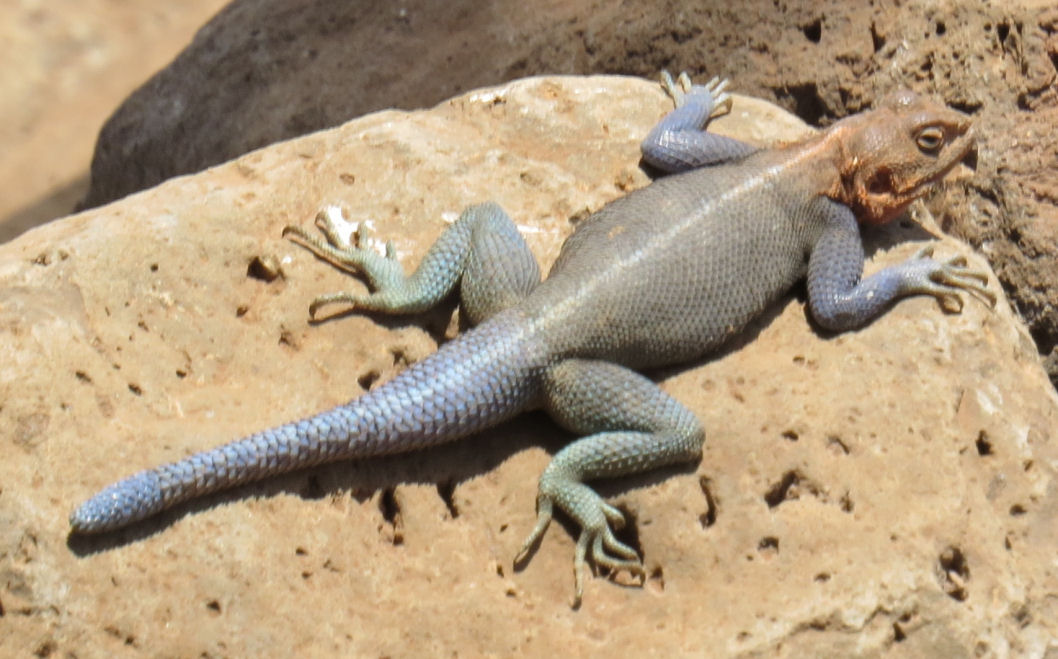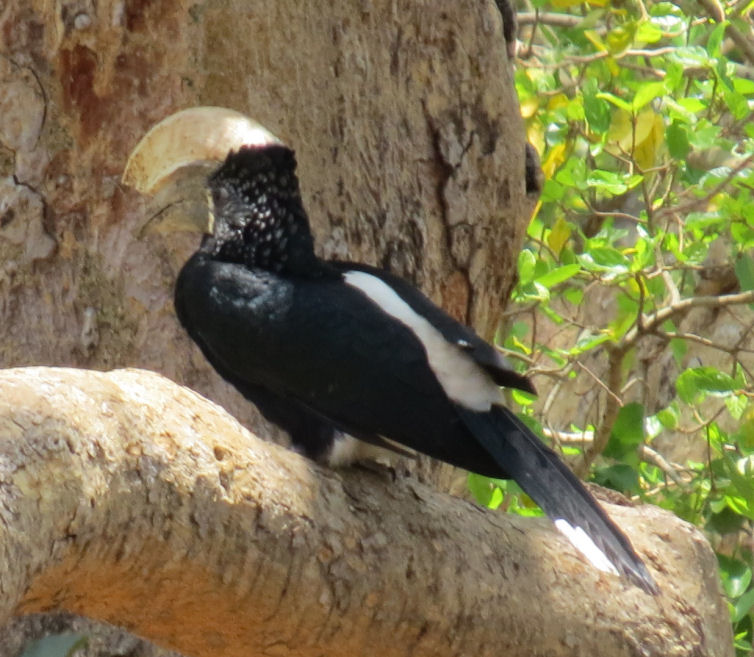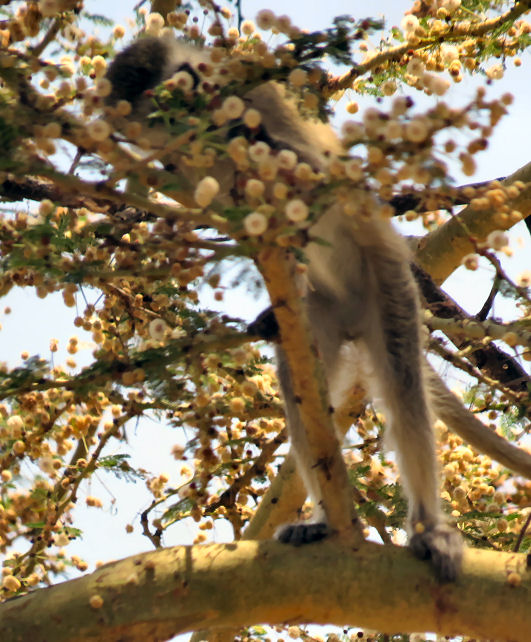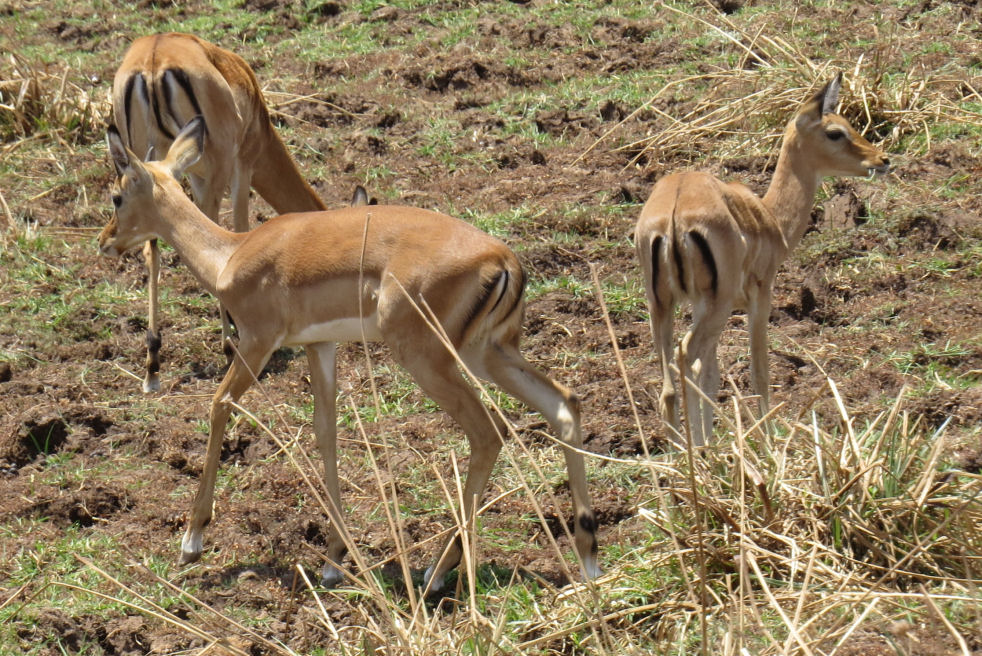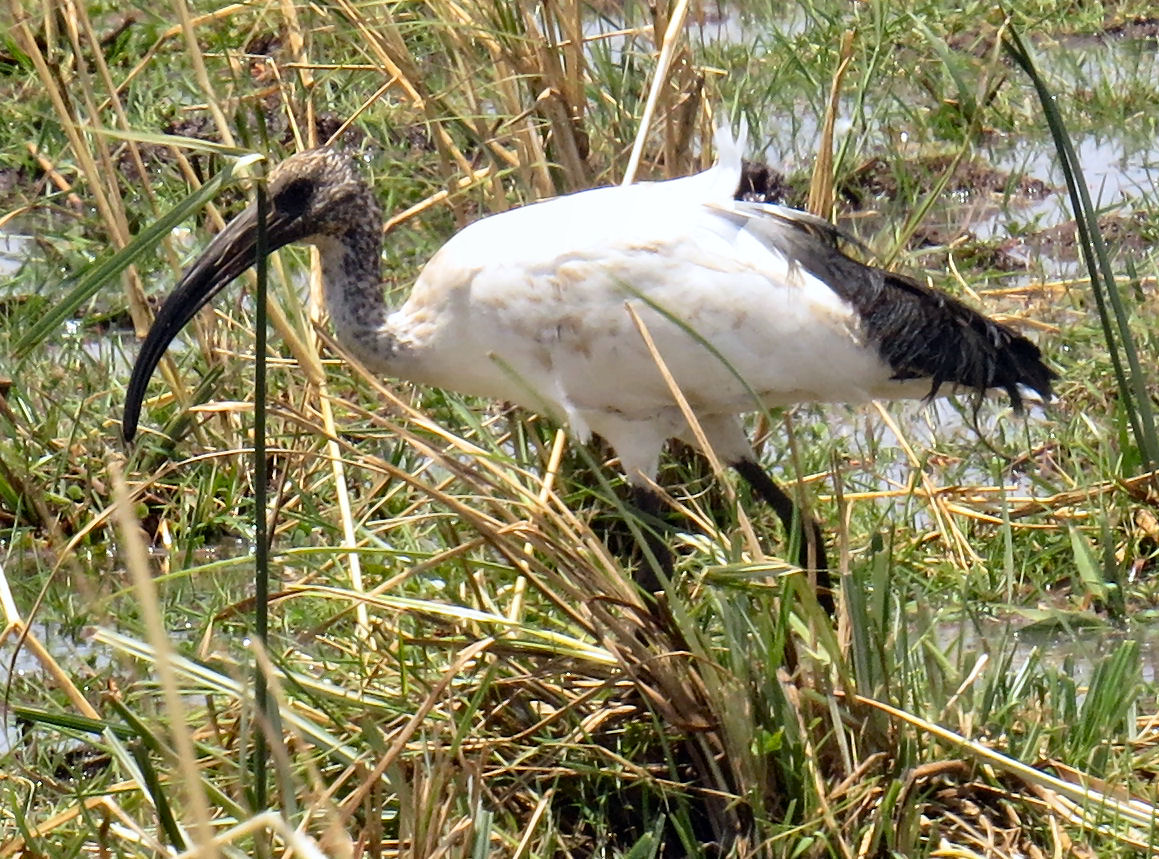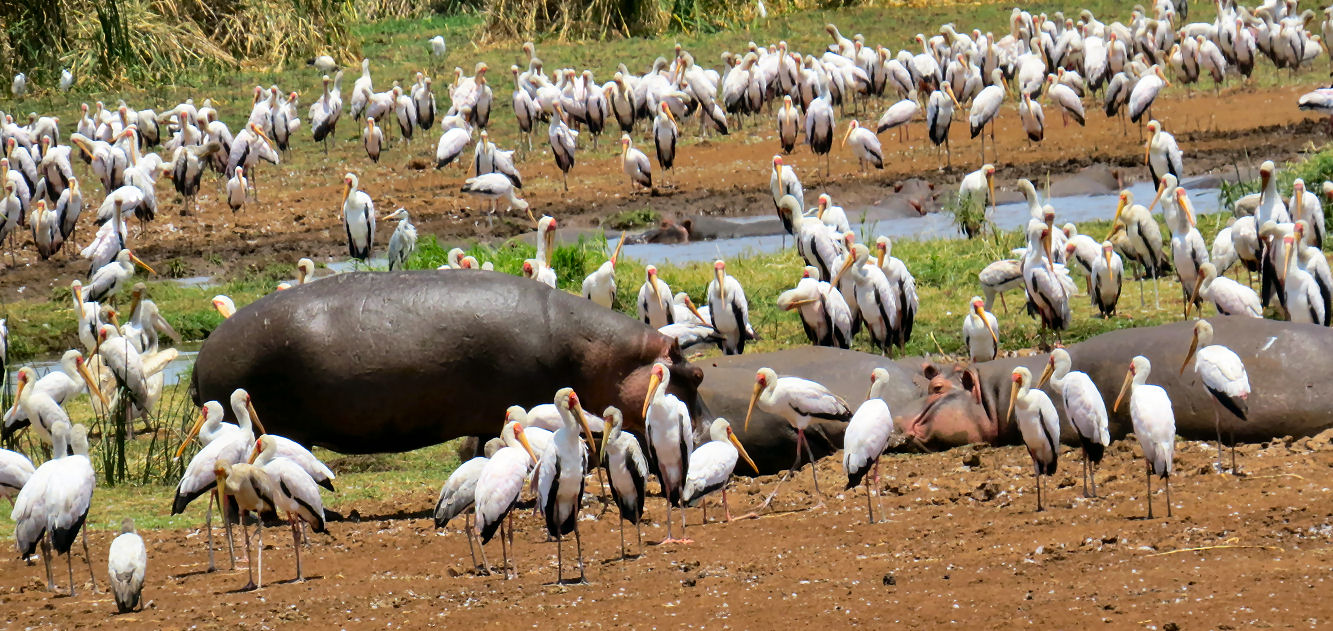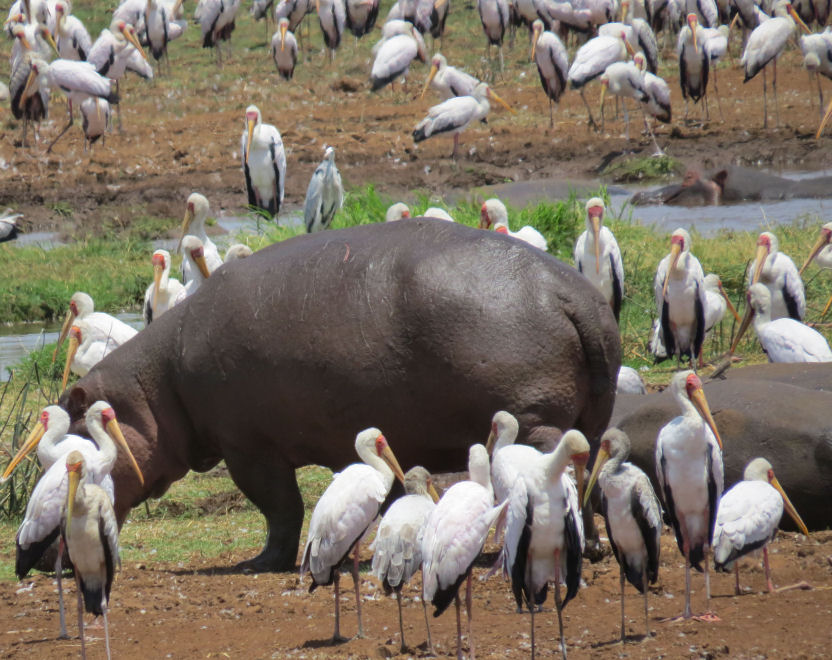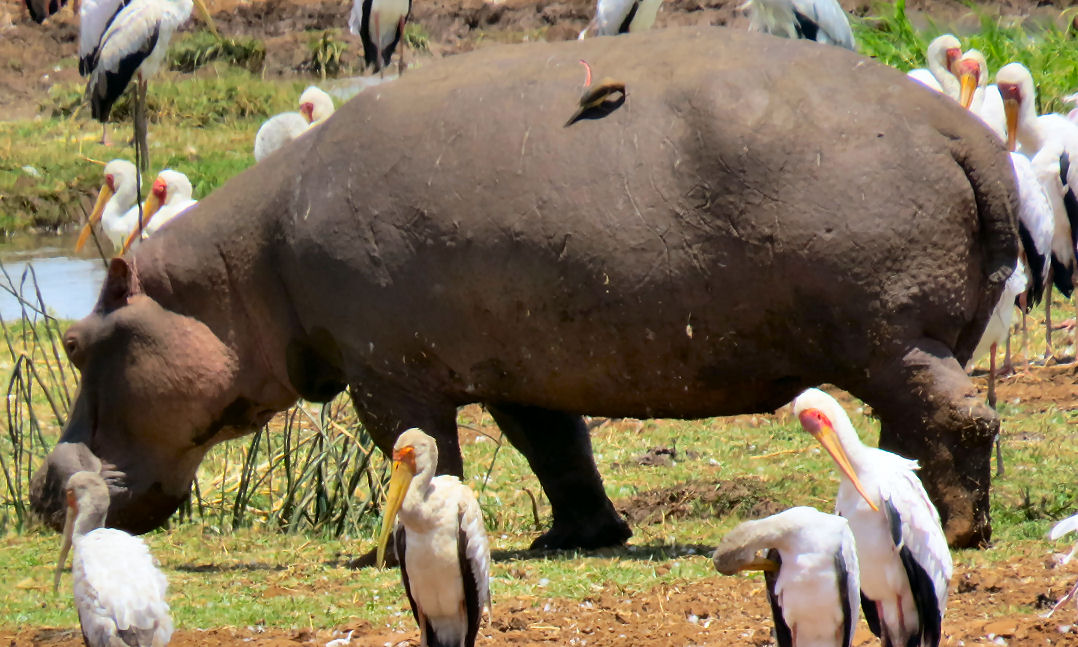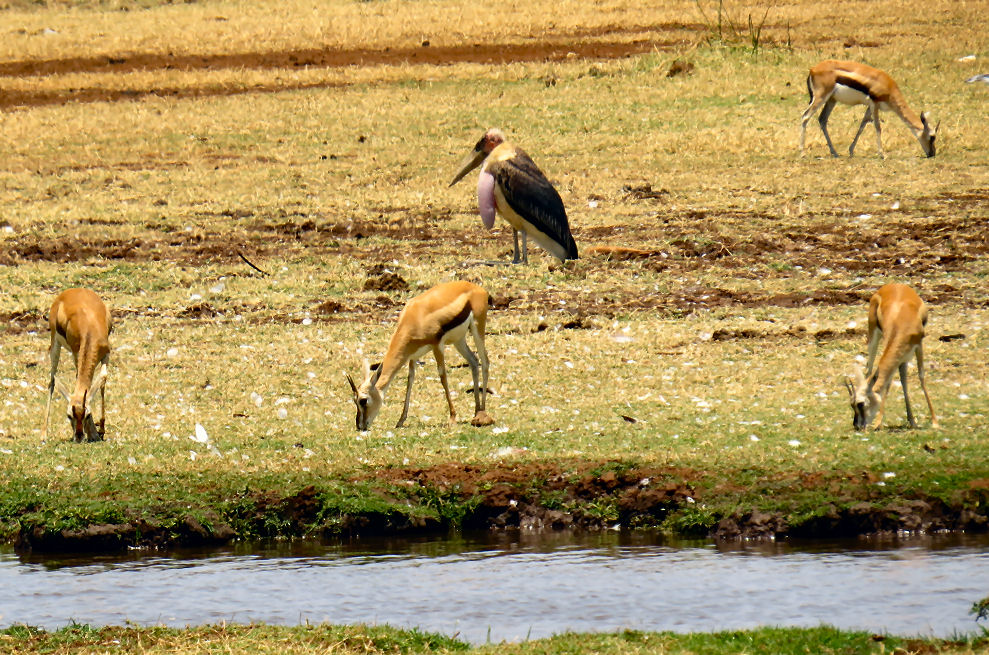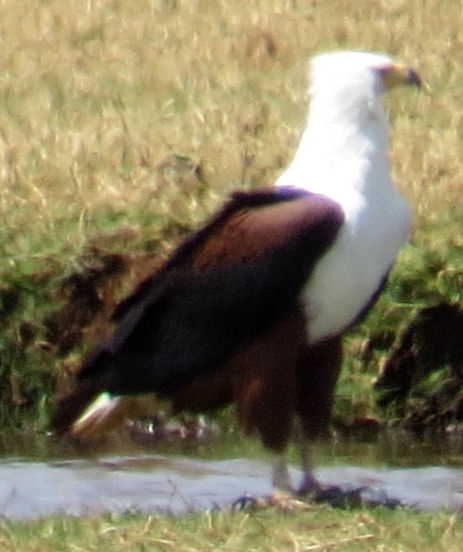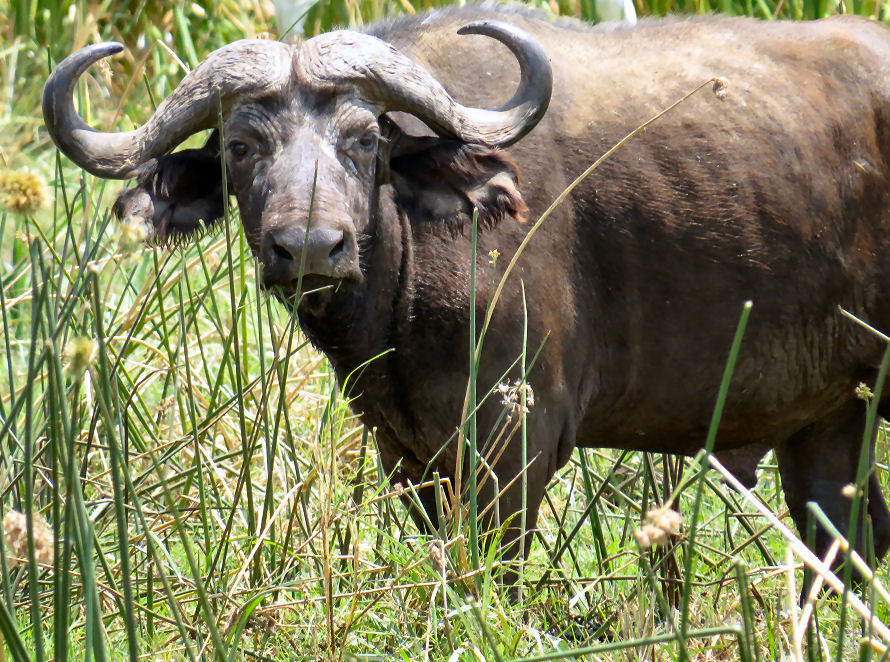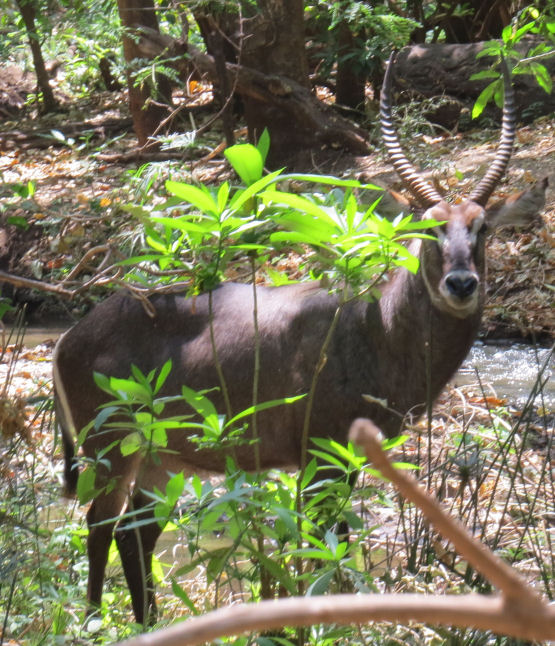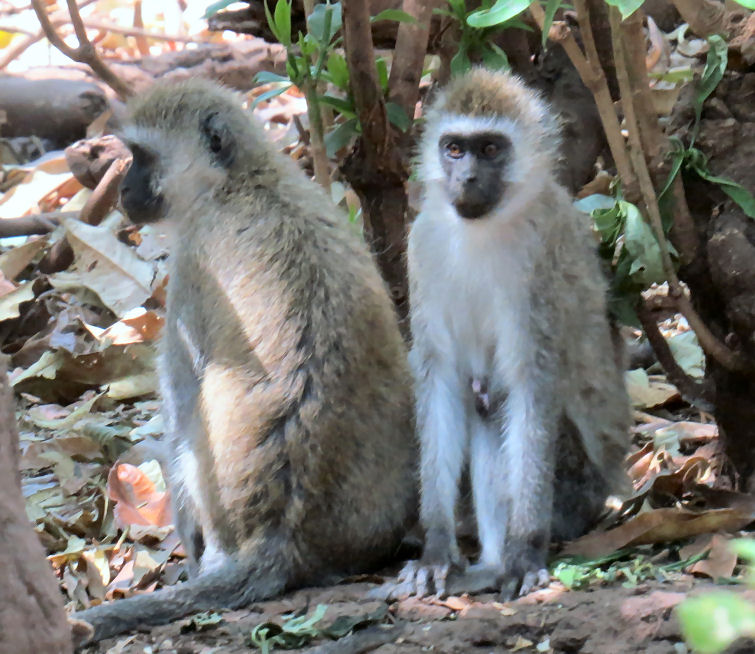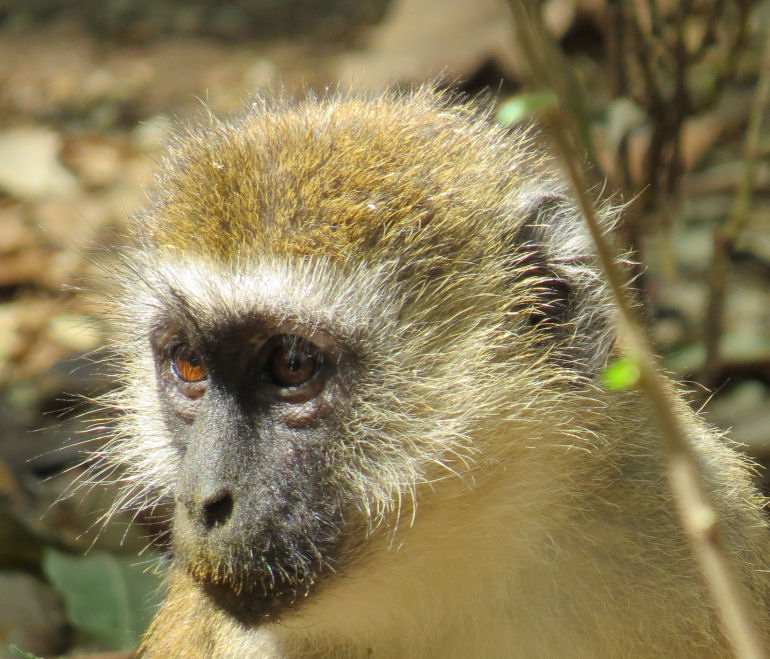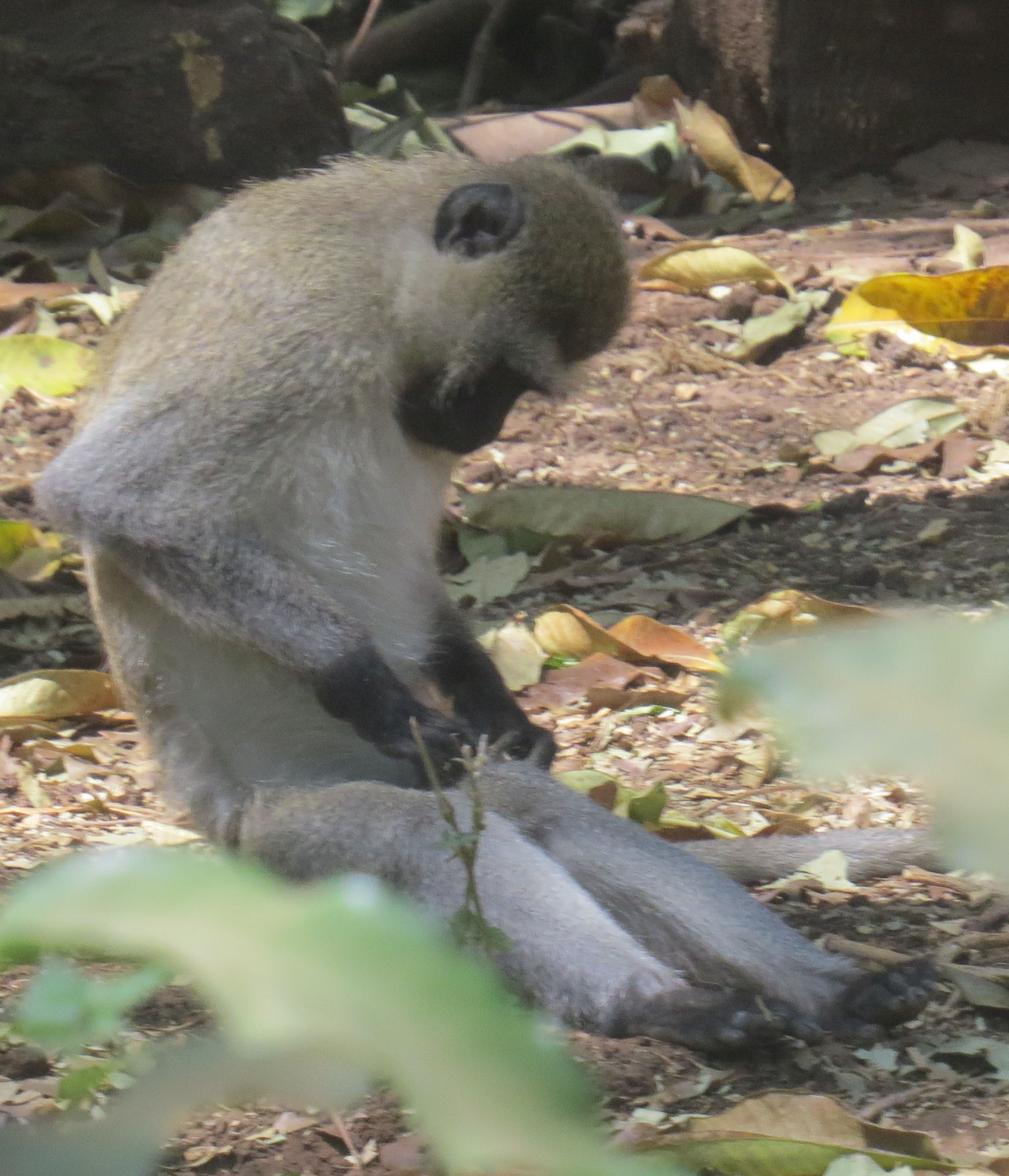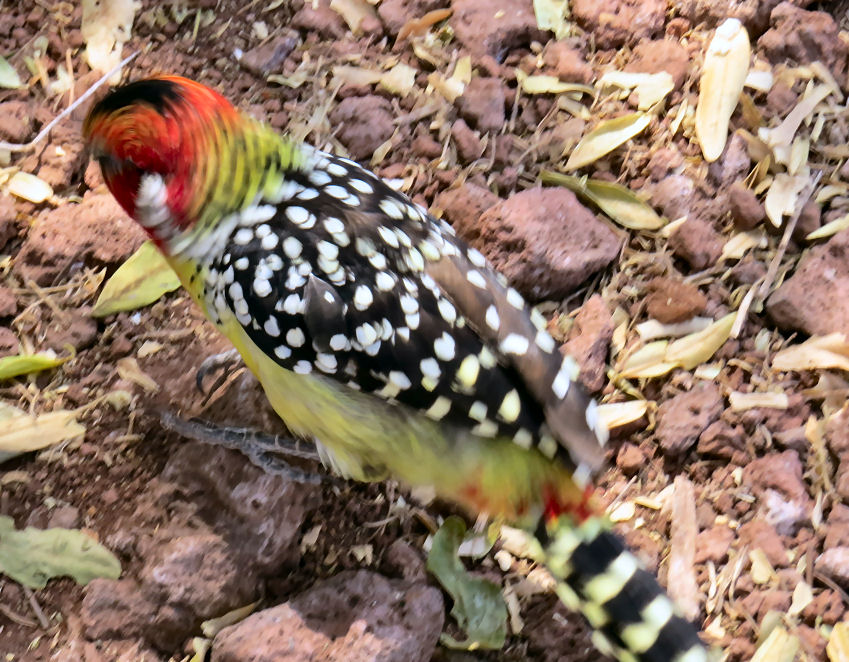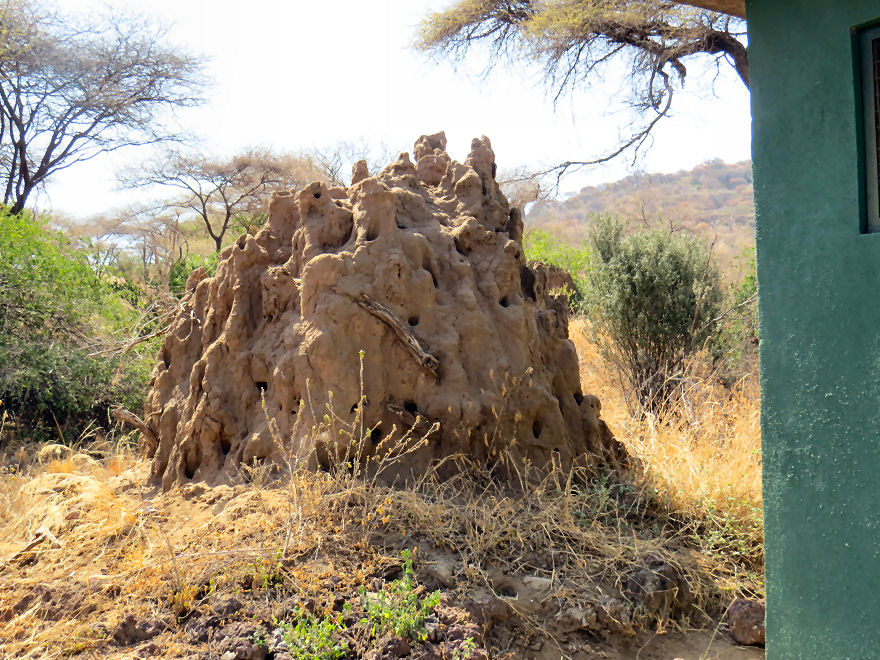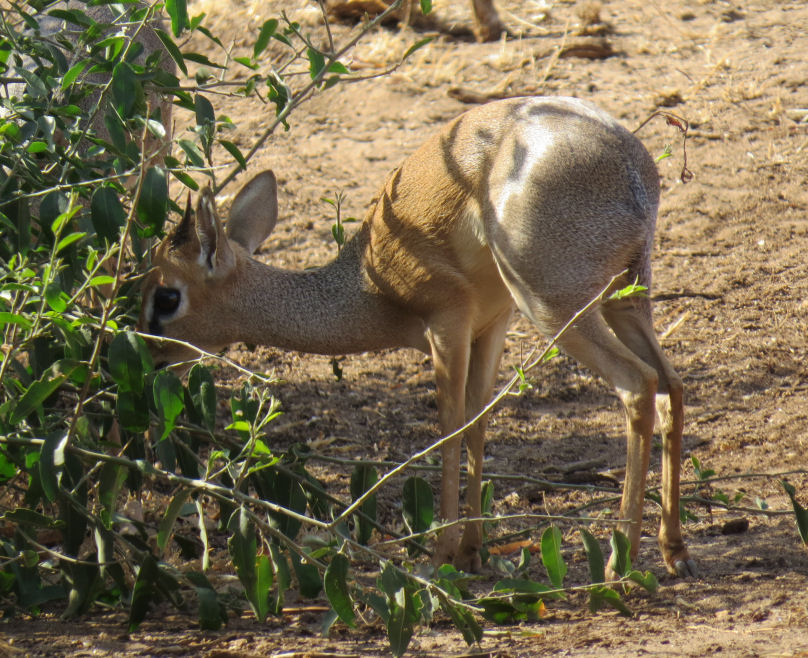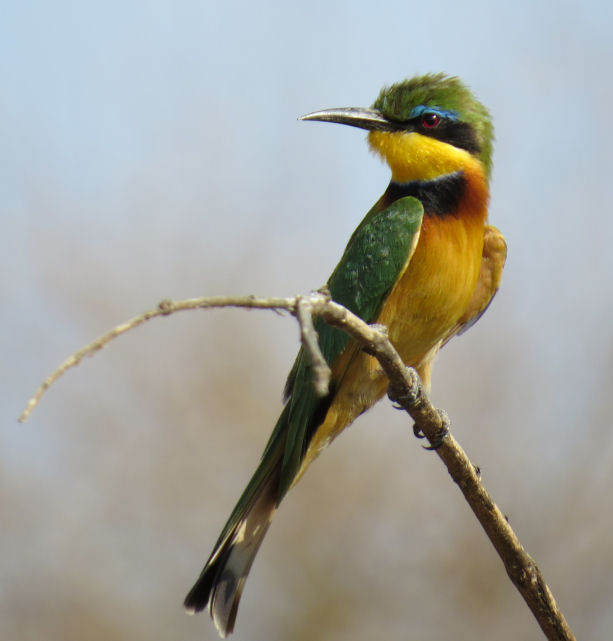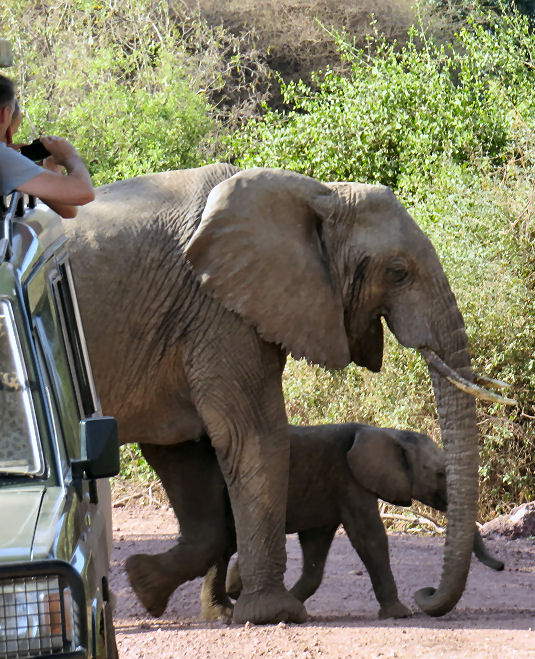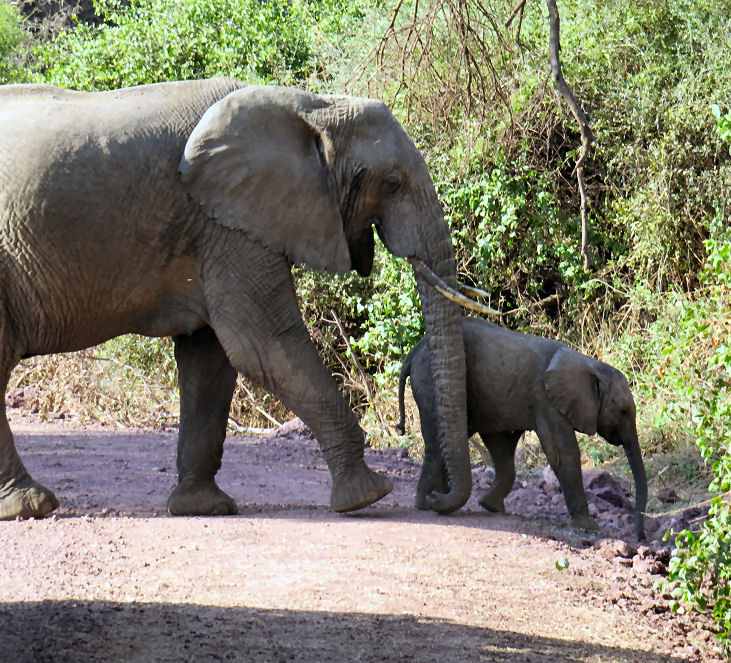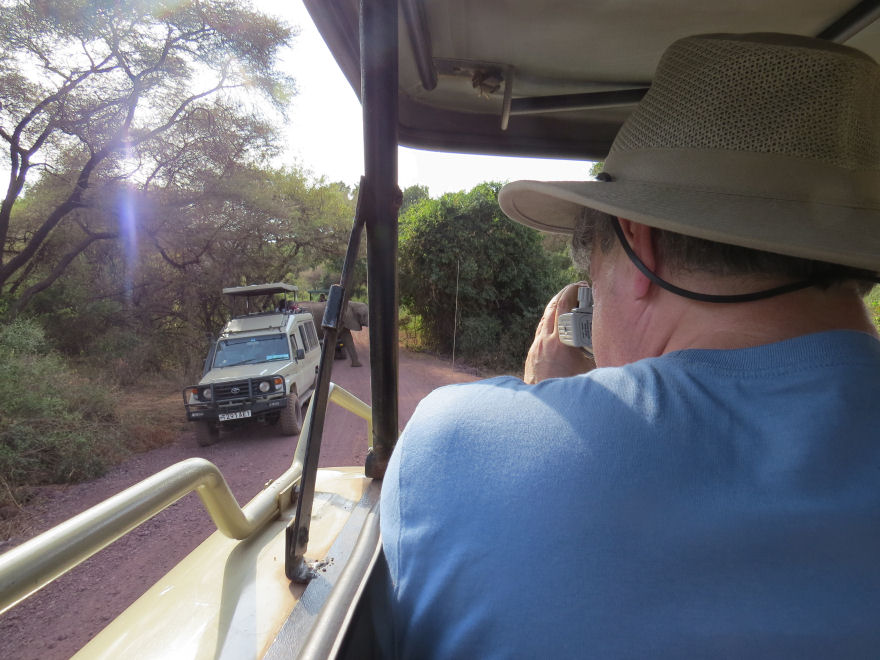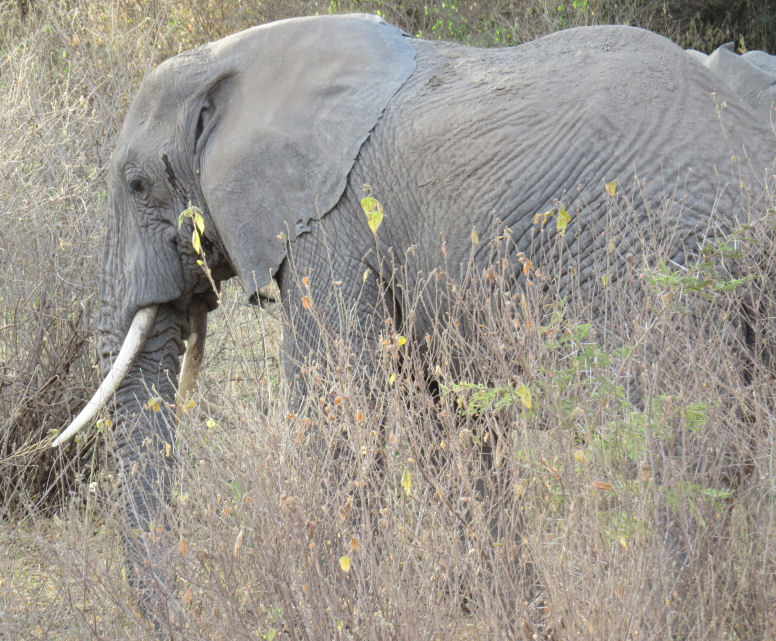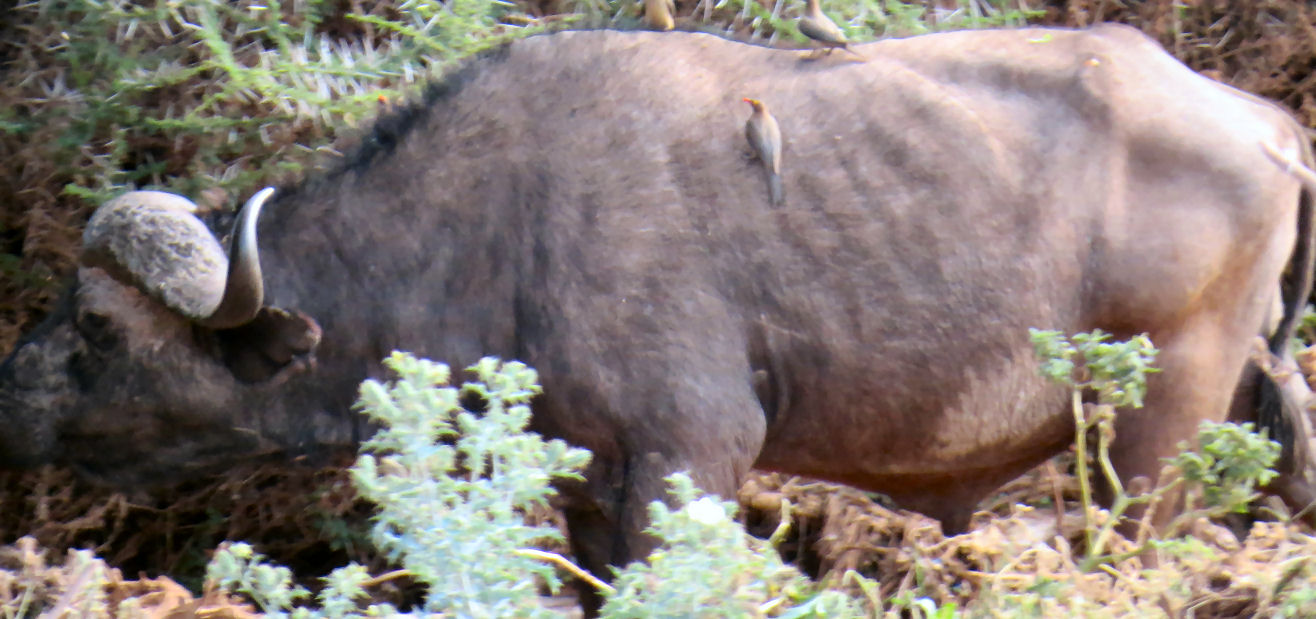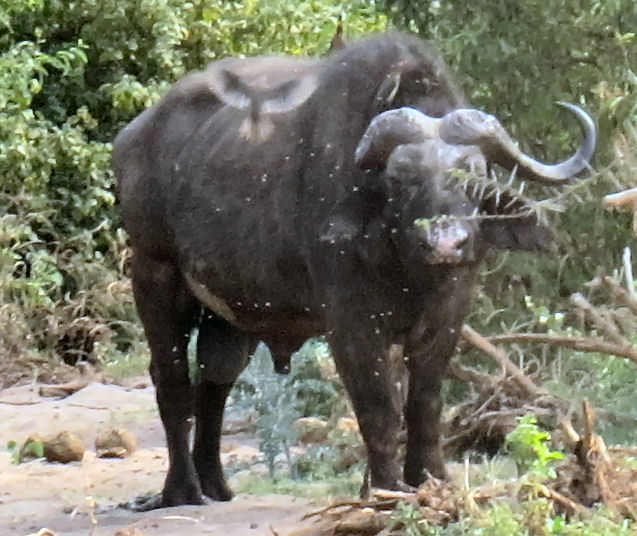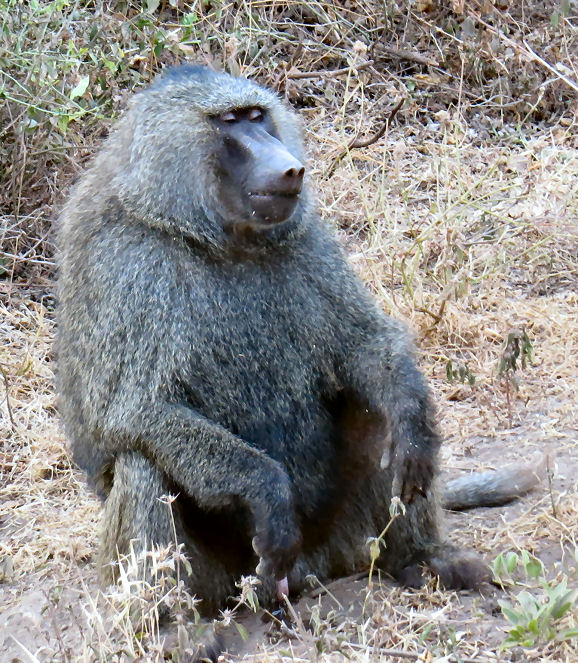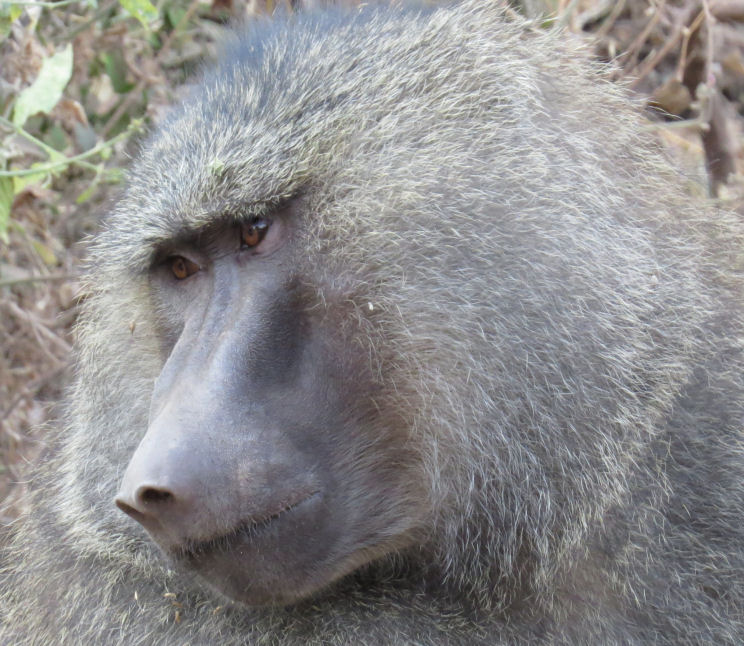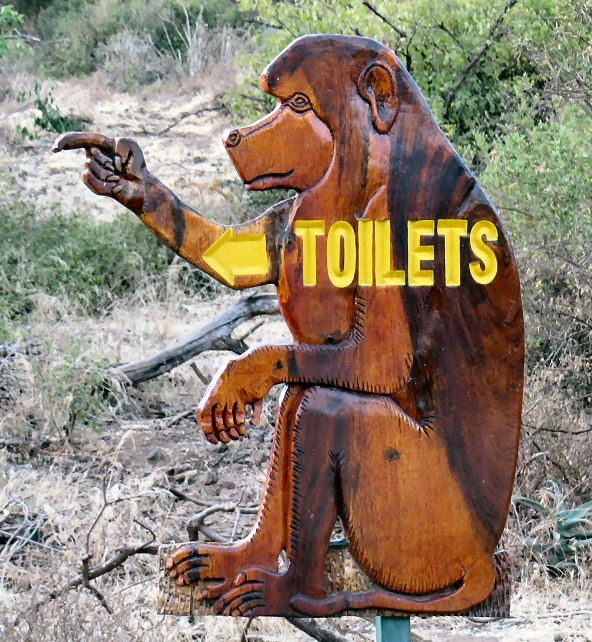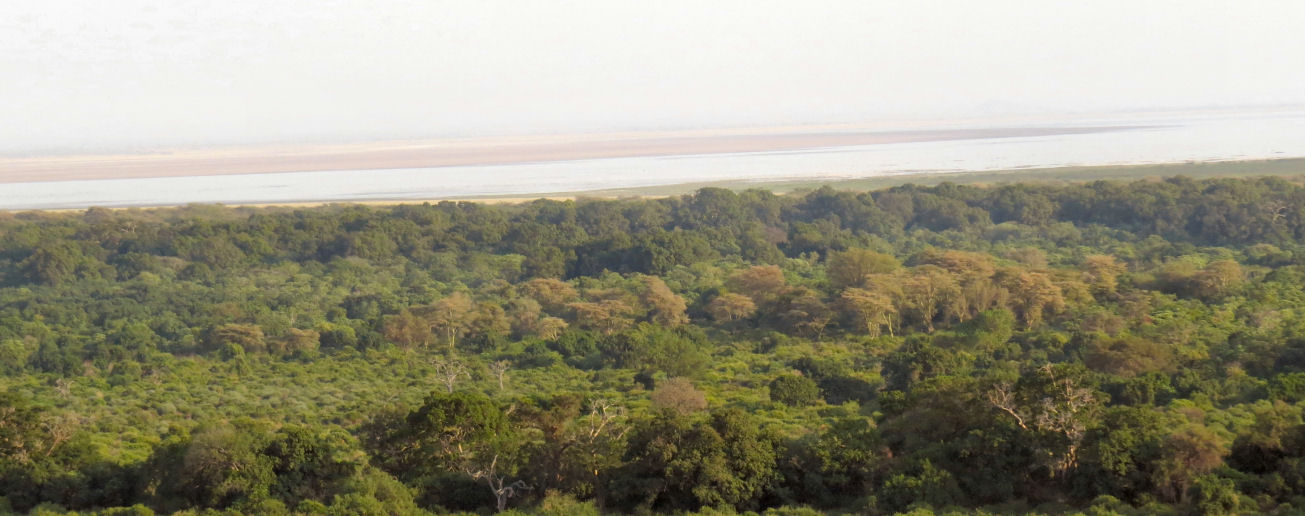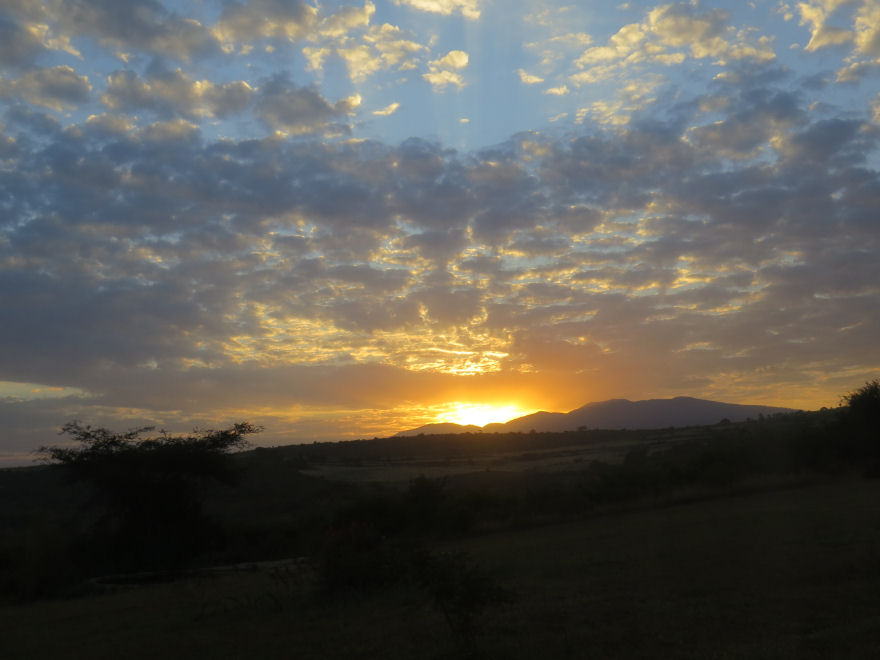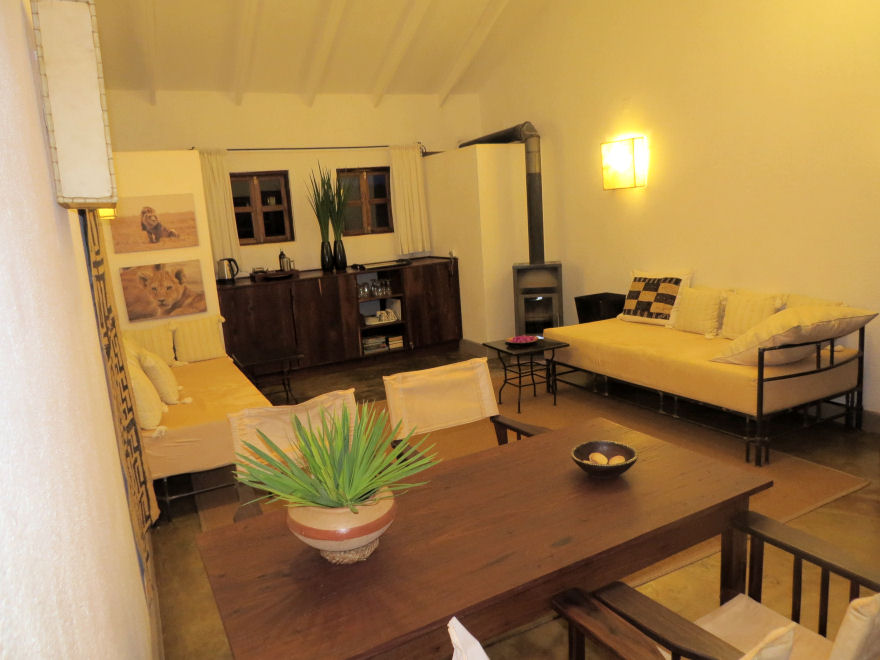I probably should not have been surprised to find myself wide awake at 1:30 a.m. After fifteen hours of air travel, another three or four by car, and a seven-hour time difference, my body seemed to have lost all concept of time. I was exhausted mentally, but I had hardly moved a muscle in two days. Needless to add, I was also still beating myself about the head and shoulders for leaving my camera on the airplane.
I suddenly remembered that I had not yet sprayed my clothes with permethrin.[1] I dragged my duffel bag into the bathroom and proceeded to spray my pants, shirts, and socks. By the end it seemed like I had used approximately half of the can, but this was just a guess.
After about an hour of this I grew sleepy again and went back to bed, where I stayed until 6:40.
Sue and I arrived at the breakfast area at about 7:30. Tom was already there. He said that Betty and Jeff were supposed to meet him for breakfast at 7 o'clock, but he suspected that Betty was using the wrong time zone. Shortly thereafter Tom went to rouse them while Sue and I ate breakfast. The layouts of both of the hotel and the breakfast area were confusing. I went looking for Tom's room and could not find it. He told me later that no one could have found his room without help from the staff. The breakfast layout was confusing, too, and the employees did not do a very good job of explaining it. I thought that they charged extra for the eggs, but I was wrong. It hardly mattered; I got plenty to eat, and that was all that I really cared about. At home I seldom ate more than a single red delicious apple for breakfast.
Jeff and Betty finally showed up for breakfast. Betty said that she had read on the Internet that Tanzania was three hours earlier than Amsterdam, not one. In my experience Dr. Google has almost always been dependable.
The agenda for our first day in Africa featured a game drive through Lake Manyara National Park. Our guide/driver from Asilia was expected at 9 a.m. While Sue sprayed some of her clothes with permethrin I removed reading materials and other stuff from my backpack and placed in it the can of Deet and a few other things that I might want to use, including, optimistically, my monopod.[2] I inserted my floppy hat and searched through my backpack for my prescription sunglasses and case. I was quite certain that I had had them in Amsterdam, and I certainly did not remove them subsequently. Nevertheless, I could not locate them. I swear that I looked through every pocket twice. This development made me so morose. In separate incidents I had evidently already lost the two most valuable items that I brought on the trip, and the vacation had not really even started. I really felt like calling the whole thing off and returning home to spend two weeks with my cat Giacomo. Believe it or not, however, this was not the lowest moment of the trip.
It was rather cool a little before 9:00 when our driver, whose name was Jackson, arrived at Onsea House in his pop-top Toyota Land Cruiser. I asked him if it was possible to stop at a camera store before the game drive. He told us that he knew of a good camera store in Arusha, the nearby city that served as the starting point for most safaris in Tanzania. He agreed to take us there, and the rest of the party was willing to wait for a few minutes rather than spend two weeks with a depressed me.
On the way to Arusha, Jackson, whose command of English was unimpeachable, pointed out some motorcycles, which he explained were used as miniature taxis in the area. He identified one of the shops along the road as a car wash in which the autos were washed by hand. The process, which took about forty-five minutes, reportedly often served as a social occasion.
We asked Jackson how many people in Tanzania[3] spoke English. He said that the children grow up speaking their tribal language. Swahili was taught and used in all classes in primary schools. In secondary schools, on the other hand, English was taught, and the English language was used in all of the other classes as well.
Most of the buildings on the outskirts of Arusha would be considered "shacks" by westerners. As we got close to the city, however, we passed two very large modern hotels. They were by far the largest structures in the area. In fact, I cannot remember any other buildings with more than two stories.
Jackson explained that Tanzania had been colonized by the Germans, who ran the country from 1889 to 1920. The British were awarded the area at the end of World War I and governed the territory called Tanganyika[4] until independence was declared in 1961. From 1962 through 1985 the country was run using socialist principles. At that point the prime minister admitted that the experiment had been a failure. Since that time it has primarily used capitalist principles. However, the country still has a very large portion of its areas devoted to national parks and other such conservation areas. It depended heavily on tourism, but we had heard from others that vast untapped wealth lay just beneath the soil. We saw a few strip mines.
The other modern building that we passed was the St. Constantine School. I asked Jackson if it was run by Greeks.[5] He replied that he did not know, but he indicated that there was a thriving Greek Orthodox community in Arusha. You can read about the school here .
After about an hour's drive we arrived in Arusha. The traffic seemed a nightmare to the three Enfielders, but Jackson calmly maneuvered our huge vehicle into a parking space right in front of an electronics store named Benson's. Jackson told me that all the employees spoke English.
The salesman understood my request immediately and found a Canon SX50 for me. He threw in a camera case and upgraded me to a 16GB memory card. I also asked for a spare battery, which he was happy to provide. Mirabile Dictu!
Sue found an LED flashlight that she wanted, and we added it to the order. I tried to use one of my American Express cards, but it was rejected. I correctly inferred that this was because I had not notified the company that I would be in Tanzania. I had notified the bank that sponsored my Mastercard, and the transaction on that card went through immediately. I certainly paid more than I did originally, but I was not about to take the trip of a lifetime without a camera when this opportunity arose. I would even be able to use the two-volume handbook for the SX50 that I had packed away in my duffel bag. What a relief!
After Jackson executed an unbelievably heroic maneuver to back the vehicle into the flow of traffic, we began the journey to Lake Manyara National Park. I spent the time setting up my new camera and putting the straps on it. There are only two ways that they can go, but it took me at least three tries for each one.
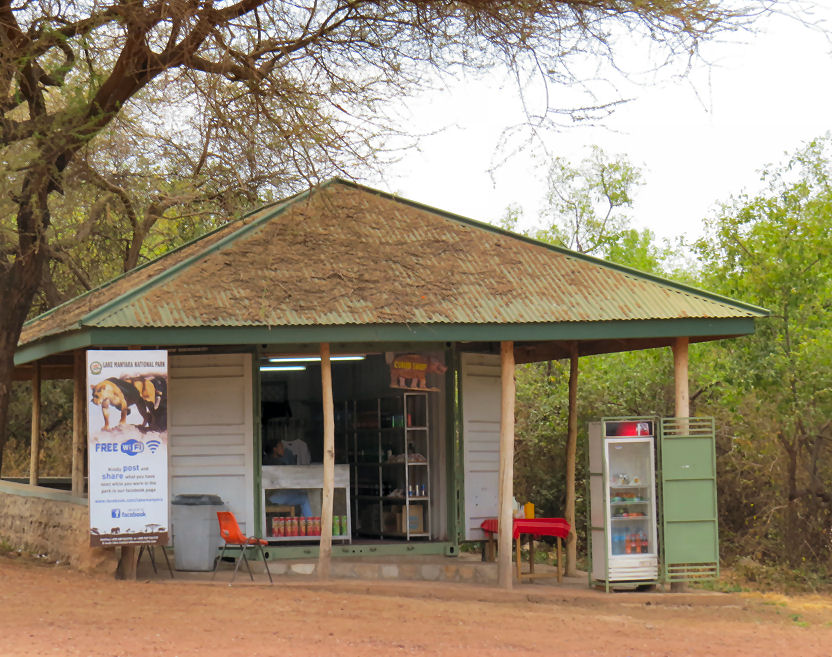
Jackson's vehicle had a charging station in the back, and so I was able to start charging my battery while he was driving. The fact that the spare battery was already charged meant that I was able to take photos by the time that we reached Lake Manyara, and by lunch time the other battery was also charged.
Jackson told us that it was market day. The Maasai people who lived in this area brought portions of their herds of goats and cows to sell so that they had money to buy supplies. They also brought donkeys to help them carry water back to their houses, which are called bomas.[6] some people snapped a few photos or movies of the Maasai, but Jackson warned us to be discrete. Most of them would want to be paid for use of their image.
The young men who have been circumcised but are not yet warriors wear black. The men wear bright colors. The women seem to prefer purple. It seems hard to believe, but according to Jackson their diet includes no vegetables at all. They drink a lot of milk.
Jackson pointed out some baobab trees. Some of them are one thousand years old, or even older. The trunks are, for the most part hollow, and animals commonly live inside of them.
We saw logs or barrels hanging in trees. Jackson explained that they were beehives.
In the distance we saw a whirlwind (or dust devil) form. We would see a few more before the day was over.
Jackson had never heard of the term "wadi" to describe streams that appear only in the rainy season.[7] There were plenty of them on the road from Arusha to Lake Manyara. Rain is very scarce in these parts in August and September.
I must say that I was favorably impressed with the road. I had read nothing good about the roads in Tanzania.
We drove past the village of a Maasai chief who had, according to Jackson, more than ten wives. The chief had provided each of his spouses with a separate house.
Suddenly we came upon some surprising farmland. Jackson explained that it was green all year round. They were able to raise sugar cane, rice, and red bananas.
At last we reached the entrance to the National Park. Jackson explained that the park basically consisted of three areas: a thick forest, the hippo pool and surrounding areas, and a second thick forest. After Jackson signed us in we were immediately greeted by a troop of olive baboons.
By this time it had become pretty warm. Jackson took a minute to raise the top on the vehicle, and I doffed my jacket and placed it in my backpack.
Lake Manyara National Park is a nice low-key introduction to the dazzling wildlife of Tanzania. On the way to the hippo pool we saw a crowned eagle, some blue monkeys, a very colorful agama lizard, a hornbill, a flock of yellow-billed storks, and some vervet monkeys. Most of these we would see often during the trip, but we were able to view animals at our pace in the park, and we all enjoyed the experience of seeing the wildlife in a natural setting.
Betty, who was rapidly falling in love with Jackson, was definitely in her element standing on the back seat with her binoculars at the ready. The rest of us enjoyed the challenge of trying to take reasonably good photos — now on the right, now on the left. My mood improved dramatically. I even convinced myself that the loss of the sunglasses was not that big of a deal. They were, after all, one prescription behind my most recent. Besides, on the trip I would have my big floppy hat to keep the sun out of my eyes, and I probably would not wear the sunglasses for any event during which I intended to take photos, which encompassed everything not legally defined as obscene.
The hippo pool was one of the few places in the park in which the tourists were allowed to exit vehicles and take photos from a large viewing stand. It was hard to see the partially submerged hippos at first. One's attention was drawn to the hundreds of birds and dozens of other animals that came to the area for a drink or a bath. Eventually, it became easy to pick out the massive beasts.
I tried to place my camera on my monopod, set it for 10-second delay, and hold it over my head at a slight angle to take a photo with an overhead perspective. However, the camera never clicked. I vowed to practice this in private before trying it again.
At the hippo pool we saw storks, zebras, wildebeests, Thomson's gazelles, ibises, egrets, pelicans, and lots of other things that did not make it into my notes.
The most unbelievable sighting, however, was when I noticed that the guy who resembled my dad whom I had seen the previous morning in the Amsterdam airport had climbed onto the other end of the viewing platform. Maybe I should not have been so surprised. Almost everyone who flies from Amsterdam to Kili is either going on safari or is planning to climb Mt. Kilimanjaro. It was extremely unlikely that he was in the latter group, and Lake Manyara National Park is a popular first stop for the safari crowd. Nevertheless, the timing was a little eerie.
When we had had enough of the hippos and their friends we climbed back into the Land Cruiser. Jackson asked us if we were about ready for lunch, and we affirmed that we were. On the way to the picnic sight we saw an African jacana, a squacco heron, a moorhen, a Cape buffalo, a giraffe, some waterbucks, and some impalas. Jackson explained that champion male impalas (and other antelopes) have a harem of females who follow them around. There are also herds of bachelor males. Occasionally one of them will feel froggy enough to challenge one of the champions. The loser has to hang around with the bachelors to try to build up his strength for a challenge.
Tom's hat blew off of his head and out of the vehicle. Jackson backed up, climbed out, and retrieved it for him. Tom addressed the problem by using the alligator clamp at the back of his hat to affix the hat to his shirt collar.
Incidentally, I am pleased to report that I have the smallest head of the three members of our group, which is to say that I can actually wear a few hats that are available in stores.
The picnic area was quite a surprise. It was a lovely relaxing setting with a terrific view of the lake. There were lots of picnic tables, but we were the only ones there. The only other person present was a ranger with a rifle. There was even a bathroom with a huge termite mound behind it.
Lunch came in individual boxes. It had been prepared by the chefs at Onsea House. It consisted of shrimp and couscous, an apple, peanuts, an egg, white wine, and a sandwich. It was really quite good. I ate everything but the apple.
A vervet monkey was there when we arrived, but it quickly retreated. Some barbets, striking black and white birds with red heads, flittered around in search of scraps. We did our best to frustrate them.
After lunch we drove nearer the lake. The most startling discovery was a dik-dik, a very small antelope. We also saw a group of giraffes. We were surprised to see that the entire coastline of the lake, which was quite alkaline, appeared pink. Binoculars revealed that a huge flock of flamingoes was responsible for that sight.
Jackson told us what tsetse flies look like. He said that the bites are painful. Sue was bit on the ankle by one, but they did not bother me.
Jackson taught us a few words of Swahili that would be useful in game drives. "Twendo" means "Let's go." "Sawa" means "OK."
As we left the park we saw the baboons again.
The drive from the park to Plantation Lodge, our hotel for the next two nights was quite enlightening. Jackson informed us that there were 130 tribes in Tanzania. There did not seem to be any conflict or fighting between them. With a few exceptions, like the Maasai, the only distinctions between them that remained seemed to be the jokes. I found this story of peaceful integration both remarkable and heartening.
The highway[8] ran through the town of Karatu, which was prospering from the influx of tourists to the area. The dirt there was red, a phenomenon that we first encountered in Kauai. Don't buy a white car! It won't stay white long.
We noticed that Karatu had a Bill Clinton Shop and a John Kerry Gift shop. I discovered on the Internet that the former visited the town on April 30, 2015. I am not sure why the latter merited a gift shop, but evidently there was also one named after Mrs. Obama.[9]
Jackson told us that tourism was down in 2015 because people were worried that there might be some turmoil in the country in anticipation of the general election scheduled for October 25. For the first time the opposition seemed to have coalesced. Jackson pointed out a couple of billboards advertising various candidates. None of us had heard about any of this, but we did know what Kim Kardashian tweeted about the pope.
We turned off of the highway onto another twisting dirt road. The sun was just setting over the mountains to the west. It was not quite dark yet, and so it was not quite as scary as the previous evening's drive.
The road terminated at Plantation Lodge, a truly beautiful hotel. This would be a great place to stay if you had a week to explore the area and an expense account. Sue and I were assigned Farm House Left. Jeff and Betty were in Farmhouse Right. Our side consisted of a very large bedroom and a capacious bathroom. I assume that their side was similar. In the middle was a very large living area with lots of amenities. We were issued three keys, one for the front door and one for each side.
We were accompanied into our room by a staff member and one of the hotel's stray cats. Several of us took advantage of the situation for a little impromptu feline therapy.
I joined Tom and Betty at the bar. It featured a very unusual arrangement in which both the table and the floor were transparent so that one could see into the wine cellar. Unfortunately I did not have my camera with me as I downed my Safari beer and some appetizers. If you go to Africa, take your camera everywhere. You never know when something striking will pop into view.
The dinner was a very pleasant affair. They had set aside a table for five for our party. The entrée was beef; I did not write down what the rest of the meal consisted of, but everything at this hotel was presented in an elegant manner and was very tasty. Sue finally joined us as we were starting dessert.
The walk from the restaurant back to the Farmhouse was an adventure. The paths were lit, but I could not remember which path led to which building. A staff member appeared out of nowhere and directed us back.
I took my Malarone pill and a shower. I tried to read for a few minutes, but I was too sleepy. I put on my sleep mask and fell asleep immediately on the very comfortable bed. The first day on safari was quite interesting and informative, but I was also psyched about the prospect of seeing Ngorongoro Crater and the wide variety of wildlif that called it home.
[1] This chemical is used to repel or kill many insects when applied to clothing. Its effectiveness supposedly lasts through several washings.
[2] A monopod is a stick that can be screwed into the bottom of a camera. Mine (like most inexpensive models) is 67" in length. It telescopes down to less than two feet. The purpose is to remove the possibility of up-down motion when shooting long-distance photos.
[3] When pronouncing the name of their country, the local people seem to accent the second syllable, as opposed to the third syllable, about half of the time.
[4] It merged with the country called the People's Republic of Zanzibar and Pemba to form Tanzania in 1964.
[5] Emperor Constantine the Great is considered a saint in the Greek Orthodox Church, but he was never declared one by Rome.
[6] I am pretty sure that that is what Jackson told us, but evidently the word boma actually refers to a group of one-room huts, called manyattas. They are designed for rapid construction.
[7] It is actually an Arabic word.
[8] The roads in Tanzania seemed to consist of two types — highways, which were paved, had two lanes, and were straight, and winding one-lane dirt roads.
[9] I learned about these at /independenttravelcats.com/2014/09/01/10-things-to-do-in-karatu-tanzania/.
